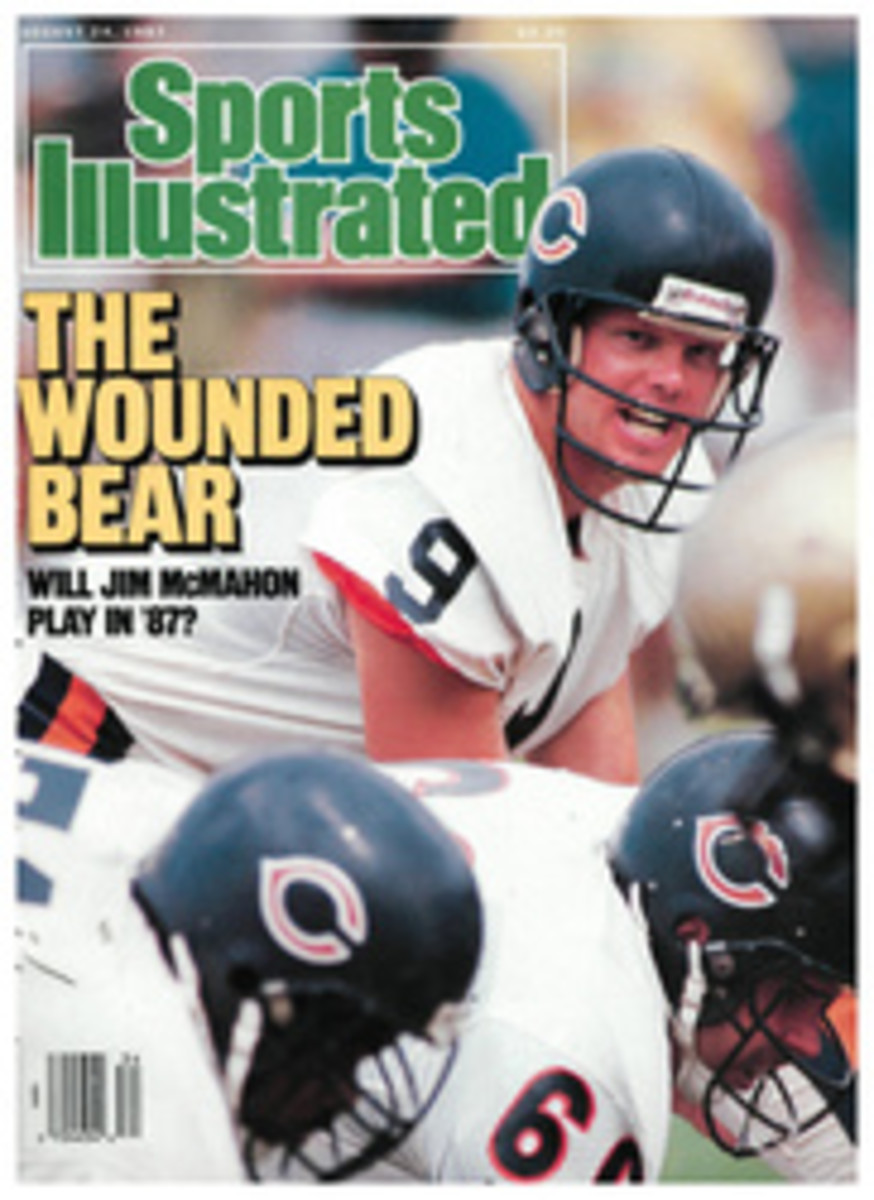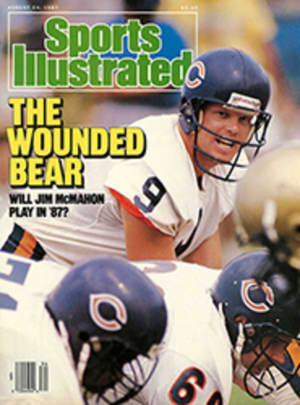
INDY LIGHTS UP
So, here were the Pan American Games in can-do Indianapolis, the city that has achieved massive urban renewal through sport. Since the mid-'70s, Indianapolis has built more than $136 million worth of pools, tracks, domes and courts, and attracted the headquarters of six national sports-governing bodies. "International sport is an industry unto itself," said Pan Am Organizing Committee (PAX/I) president Mark Miles. With a $35 million budget and 37,000 volunteers, Indy was staging a grand show for the 6,032 athletes and officials from 38 countries who came to town.
The U.S. last hosted the Pan Ams in 1959 in Chicago. Since then, the games have usually been a gobbling of medals by the haves in the barbed-wire-enclosed stadiums of the have-nots. There was no barbed wire at Indy, but, predictably, there was political controversy. A new site for the Aug. 23 closing ceremony had to be found when the American Legion objected to the use of the Legion Mall for recognition of Cuba as the host of the 1991 games. And various anti-Castro groups appeared at venues around the city, distributing leaflets and cards with telephone numbers that potential defectors could call. Yet PAX/I bravely contemplated inviting Fidel Castro to drop in; it gave up when no federal security guarantees were forthcoming. "Credit the Administration, though," said Miles. "It let 650 Cubans in and allowed direct Cubana airline flights. It felt this was special and ought to be treated like the Olympics."
Once the games began, it was glaringly clear that the hemisphere is still a top-heavy conference. Below the U.S., Cuba and Canada, there is precious little depth. The result has been such an embarrassment of medals for the dominant countries (325 for the U.S., 146 for Cuba and 145 for Canada through Sunday's events) that one turned for relief to the finest individual performances.
Indeed, the games generated athletic brilliance all week. Silvia Poll, 16, Costa Rica's first world-class swimmer; Denise Parker, a 13-year-old archer from Utah; Michele Granger, 17, of California, a Softball pitcher extraordinaire; and Ty Griffin, a switch-hitting second baseman for the U.S., all excelled in Indianapolis. But it was Jackie Joyner-Kersee, by a series of steps, who ascended to the highest plane of her craft. It happened on Thursday evening, above the shining white takeoff board at the end of the long jump runway.
On her third jump of the night Joyner-Kersee had added half an inch to her American record with a 23'9¼" effort, but her speed was such that she had to chop her steps near the takeoff. After the jump, she looked to her coach and husband, Bob Kersee, in the stands. He held up two fingers, half an inch apart. "That meant to move the start of my run back a bit," Joyner-Kersee said later, "but more than that, it meant I could keep on jumping."
Kersee had cautioned his wife against taking part in the Pan Am Games. She was only two weeks away from the heptathlon at the IAAF World Championships in Rome. "The risk of injury is greater in the long jump than in any other event," he said. "But she was wild to jump here. She likes the fast runway and the soft sand."
So she would take it one jump at a time. "Any little pain," she said, "and I promised I'd stop."
Only on her sixth and last jump did Joyner-Kersee put it all together. She was so fast on the runway that her thick hair seemed about to peel from her scalp. She hit the board with power and soared to an impressive height. She exploded out of the sand knowing that this one was very, very good.
An official sank a yellow marker at the spot. Upon this was trained an optical laser made by Jena of East Germany, a nice touch, because the world record of 24'5½" was held by the G.D.R.'s Heike Drechsler. An official peered through the eyepiece. He beckoned another official.
"I don't think it's a world record," Joyner-Kersee said, losing faith. "Don't be too sure," said her teammate, Jennifer Inniss, who finished second at 22'5¾".
The long jump record would fulfill Joyner-Kersee's most cherished childhood dream. It was something for which she had yearned years longer than the heptathlon record, which she broke twice in 1986. She had resisted taking up the heptathlon for fear it would compromise her jumping.
Now she was about to find that it had not. IAAF rules require that world records be manually confirmed with a steel tape. Joyner-Kersee saw a man arrive with one. Ten officials took some part in the measurement. At last the man in charge approached her. "Jackie," he said, "you tied the world record. I couldn't stretch it."
Euphoria. Bob Kersee danced. He shouted. He pressed his head to a steeplechase barrier and sobbed. "I'm so emotional," he said when composed, "because we were so close to not coming here. I have to ask myself: Am I so over-protective that I could have kept her from this?"
Well, yes. He is.
"The concern was her health," he said. "The concern was the worlds. You plan and plan"—he stared off into the sky for a moment—"but Jackie makes you take life one day at a time."
The only other American record was set by Judi Brown-King of Eugene, Ore., who on Wednesday withstood a fierce effort by Jamaica's Sandra Farmer to win the 400-meter hurdles in 54.23, taking .15 from her old standard.
Asked whether Farmer's competition helped or hurt, Brown-King said, "I don't care whether the person in the next lane is the world-record holder or Helen Keller. I run my own race." She looked up at the astonished expressions of those listening and added, "I don't think Helen would mind my saying that, do you?"
Carl Lewis just minded the wind. Gusting and swirling between a 5.8-meters-per-second tailwind and a 2.6-mps wind in Lewis's face, the hot Indiana breezes wreaked havoc with his long jump approaches on Sunday afternoon. He had to make adjustments in midsprint. Yet on his fourth jump Lewis dropped into the sand near the mark for the 29'2½" world record, set by Bob Beamon at the 1968 Mexico City Olympics. "Where's the man with the steel tape?" asked his coach, Tom Tellez, who is convinced the record is near. But this jump was 6 inches short: 28'8½".
Lewis took that jump out of order so that he could anchor the U.S. 400-meter relay team. Lee McRae, Lee McNeill, Harvey Glance and Lewis won in 38.41. Lewis then returned to do a pair of windy 28'5¾" jumps. But the spark was gone. "You just have to have that calm, consistent wind," he said.
Lewis will go on with the hunt. "I'll compete more recklessly," he said. Obviously a man for the future.
TWO PHOTOS
MANNY MILLAN
Pan Am action: Cuba defeats the U.S. women in volleyball; U.S. archer Parker takes aim; Jamie Smart rides for Canada; roller-skating at the Speedway.
PHOTO
JOHN W. McDONOUGH
[See caption above.]
TWO PHOTOS
RICHARD MACKSON
[See caption above.]
PHOTO
JOHN W. McDONOUGH
Down and out: Greg Foster (159) was tripped and stopped by a fallen competitor's hurdle.
PHOTO
MANNY MILLAN
The wind played tricks as Lewis jumped long enough to win, but not his longest.
PHOTO
TONY DUFFY/ALL-SPORT USA
When Joyner-Kersee finally landed, she had equaled the world record of 24'5½".

